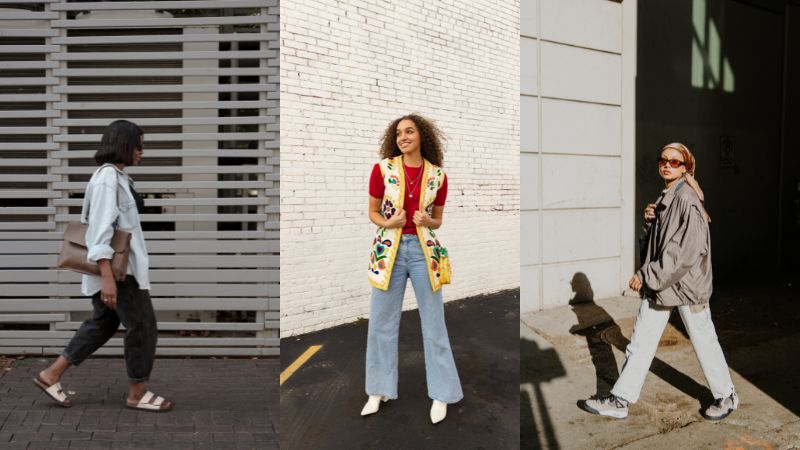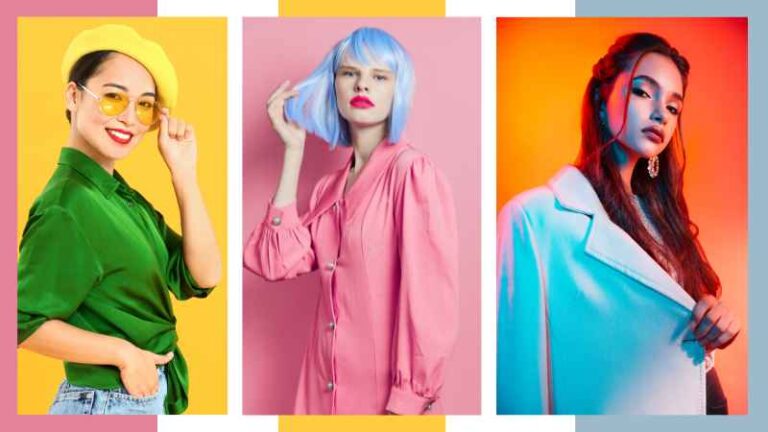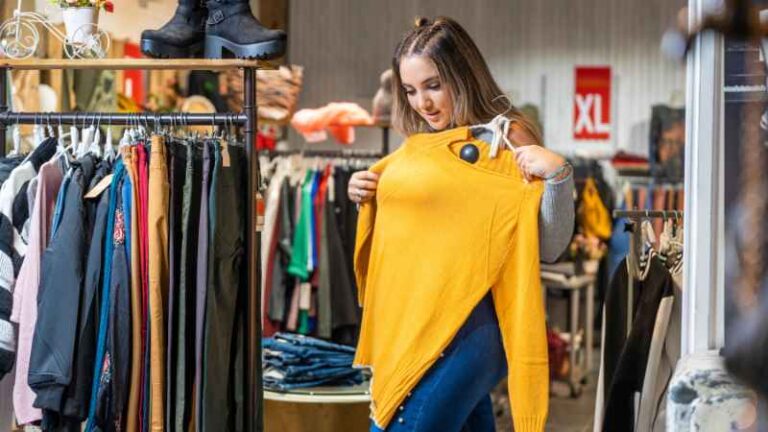Sustainable fashion refers to clothing that is designed, manufactured, distributed, and used in environmentally friendly ways. This means that sustainable fashion considers the environmental and social impact throughout the lifespan of a garment, from its design to its disposal.
The concept of sustainable fashion isn’t new. It dates back to times when clothes were made more durably and designed to be used for longer. However, the modern sustainable fashion movement gained momentum in the late 20th century as people became more aware of the environmental and social impact of mass-produced fashion.
Sustainable fashion is crucial because the fashion industry significantly impacts our planet. It’s responsible for a large portion of the world’s water consumption and pollution, and it contributes to labor issues such as unfair wages and poor working conditions. Sustainable fashion movements aim to change these practices by advocating for environmentally friendly and ethically produced clothing.

The Roots of Sustainable Fashion
Early Influences and Pioneers
A. Historical Context and Early Advocates
- In the early days, sustainable fashion was more about utility and durability. Pioneers of the movement focused on creating garments that would last and could be repaired rather than replaced. These early advocates were motivated by a need for practicality and a desire to reduce waste.
- Key Milestones in Sustainable Fashion History
- The 1960s and 1970s saw a rise in environmental awareness, which influenced fashion. The use of natural and recycled materials became popular. In the 1990s, the term “sustainable fashion” started being used more widely, marking a significant milestone in the movement’s history.
B. The Environmental Impact of Traditional Fashion
- Overview of Environmental Damage Caused by the Fashion Industry
- The traditional fashion industry is one of the world’s largest polluters. It consumes vast amounts of water, produces a significant percentage of global greenhouse gases, and often uses harmful chemicals that pollute waterways.
- Specific Examples of Ecological Issues
- For example, the production of a single cotton t-shirt requires about 2,700 liters of water—almost what an average person drinks in three years. Dyeing clothes contributes to water pollution, with untreated toxic wastewater from textile factories flowing into rivers and seas.
C. Social and Ethical Aspects
- Labor Practices in the Fashion Industry
- Many garments are produced in developing countries, where workers are often paid very low wages and work in unsafe conditions. Child labor is also a significant concern in some parts of the fashion industry.
- The Rise of Ethical Consumerism
- As awareness of these issues grows, more consumers demand ethical fashion. This means they want clothes made in a way that respects worker rights, pays fair wages, and ensures safe working conditions. Ethical consumerism is pushing the industry towards more socially responsible practices.
D. Key sustainable fashion movements
Slow Fashion
- Definition and Principles
- Slow fashion is all about quality over quantity. It encourages the making of clothes that are timeless in design, durable in wear, and made in an environmentally and ethically responsible manner. The principle here is to slow down the pace of fashion consumption, focusing on ‘less is more’.
- Impact on Consumer Behavior and Industry Practices
- This movement influences consumers to buy less but choose better-quality items that last longer. For the industry, it means shifting from the traditional model of releasing new collections every season to creating timeless pieces that can be worn for years.
E. Eco-Fashion
- Use of Eco-Friendly Materials and Processes
- Eco-fashion involves using materials and processes that are kind to the environment. This includes organic fabrics that are grown without harmful pesticides and production methods that use less water and energy.
- Innovations in Material Science
- Innovations include recycled fabrics made from plastic bottles and other waste materials. Organic cotton is another example; it is grown without harmful chemicals, making it better for the environment and farmers.
F. Ethical Fashion
- Focus on Labor Rights and Fair Trade
- Ethical fashion is concerned with how clothing is made, focusing on the treatment of workers in the fashion industry. It advocates for fair wages, good working conditions, and against child labor and exploitation.
- Notable brands and designers in ethical fashion
- Some notable ethical fashion brands include Patagonia, known for its environmental activism, and Stella McCartney, a luxury brand that emphasizes cruelty-free and sustainable practices.
G. Circular Fashion
- Concepts of Circularity in Fashion
- Circular fashion is based on the principles of a circular economy. It aims to reduce waste and pollution, keep products and materials in use, and regenerate natural systems. This means clothes are designed with their end of life in mind, focusing on reuse, repair, and recycling.
- Examples of Circular Business Models
- Examples include recycling old garments into new textiles and upcycling, where old clothes are creatively transformed into new items. Brands like Eileen Fisher and H&M have recycling programs encouraging customers to bring back worn clothes for recycling or upcycling.
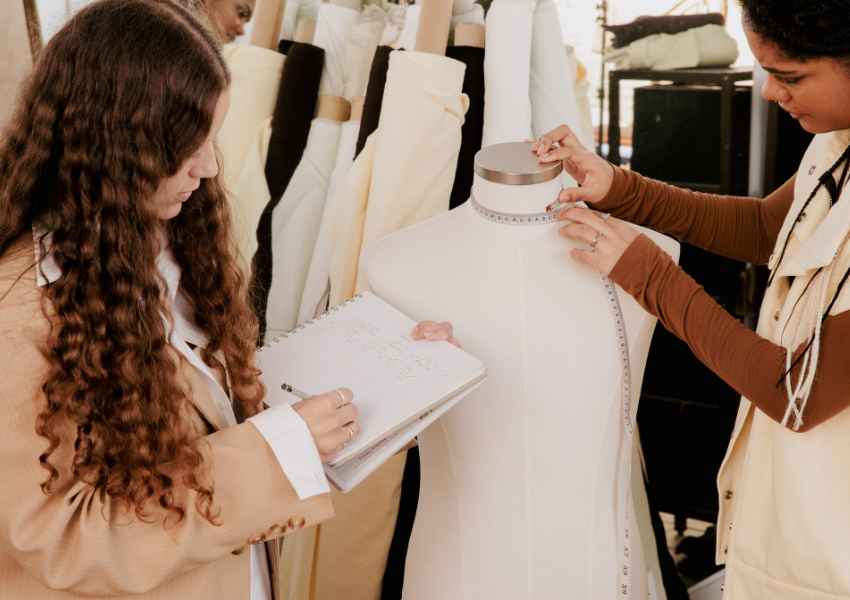
The role of technology and innovation
Technological Advances in Sustainable Fashion
- Sustainable Manufacturing Technologies
- In the realm of sustainable fashion, manufacturing technologies have evolved to reduce environmental impact. This includes waterless dyeing processes that save a tremendous amount of water and energy-efficient machinery that cuts down on electricity use. These advancements help make the production of clothes more eco-friendly.
- Digitalization and its Impact
- Digital technologies like 3D printing and artificial intelligence (AI) are revolutionizing fashion design and production. 3D printing allows for precise material usage, reducing waste. AI in design can optimize fabric cutting to minimize leftovers. Digitalization also includes virtual fitting rooms, which help reduce returns and the associated carbon footprint.
Innovations in Fabric and Material Science
- Development of Sustainable and Biodegradable Materials
- Scientists and designers are developing fabrics that are not only sustainable but also biodegradable. This means they can break down naturally without harming the environment. Examples include fabrics made from organic materials like hemp, bamboo, and even more innovative materials like pineapple leather and mushroom-based textiles.
- Case Studies of Groundbreaking Materials
- A notable example is Piñatex, a leather alternative made from pineapple leaf fibers, which are a byproduct of pineapple harvest. This material is not only sustainable but also provides additional income for farmers. Another example is Mylo, a material developed from mycelium (mushroom roots), which is being used to create leather-like products.
The Digital Fashion Movement
- Rise of Virtual Fashion and Digital Wardrobes
- The digital fashion movement is about the creation and use of clothing in digital formats. This could mean designing virtual clothes for online avatars or using digital platforms to showcase fashion designs. It’s an area that’s growing rapidly, especially in gaming and virtual reality spaces.
- Impact on Sustainability
- Digital fashion has the potential to significantly impact sustainability in the fashion industry. It allows consumers to enjoy fashion in a completely virtual manner, eliminating the need for physical production, which in turn reduces material waste and environmental impact. Virtual fashion shows and digital samples also reduce the carbon footprint associated with traditional fashion shows and sample manufacturing.
Consumer behavior and market trends
Shift in Consumer Awareness and Demand
- Changing Attitudes Towards Sustainable Fashion
- More and more consumers are becoming conscious of the environmental and social impacts of their clothing choices. People are now seeking out sustainable options, preferring brands that demonstrate a commitment to eco-friendly practices and ethical standards. This shift in attitude is partly driven by a greater awareness of global environmental issues, like climate change and pollution.
- Influence of Social Media and Activism
- Social media and activism have played significant roles in raising awareness about sustainable fashion. Platforms like Instagram and TikTok are filled with content that educates consumers about the impacts of fast fashion and the benefits of sustainable alternatives. Activists and eco-bloggers use these platforms to share information, call out unsustainable practices, and promote eco-friendly brands.
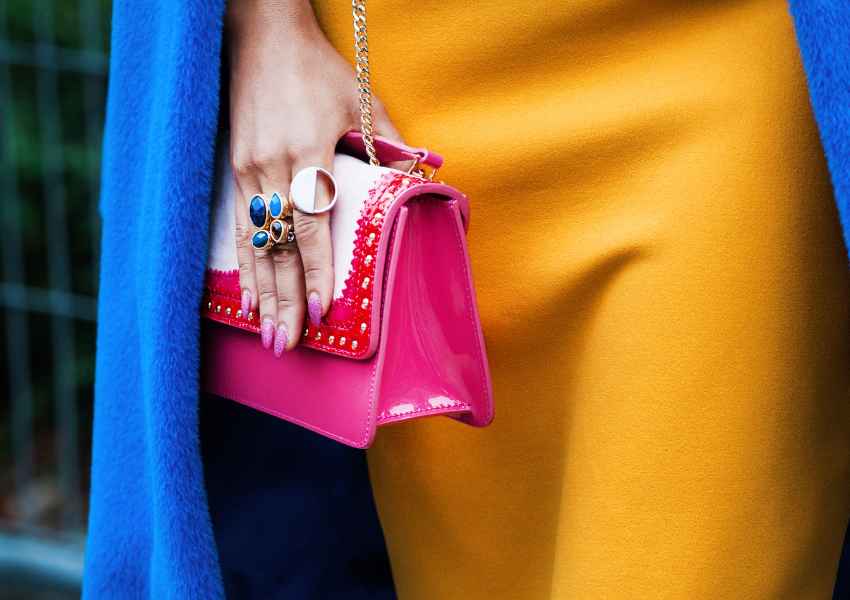
The Role of Influencers and Celebrities
- Prominent Figures Advocating for Sustainable Fashion
- Celebrities and influencers have a powerful impact on consumer behavior. Figures like Emma Watson and Leonardo DiCaprio have used their platforms to advocate for sustainable fashion. Emma Watson, for example, has been known to wear sustainable outfits on the red carpet and openly supports eco-friendly fashion brands.
- Case Studies of Influential Campaigns
- One notable campaign was Stella McCartney’s 2017 collaboration with the conservation organization Parley for the Oceans. This campaign, which involved creating luxury shoes from recycled ocean plastics, received significant attention and praise, demonstrating how high-profile collaborations can raise awareness and set new trends in sustainable fashion.
Market Response and Growth of Sustainable Brands
- Response of Big Fashion Brands to Sustainability Trends
- Recognizing the growing demand for sustainable fashion, many big brands are incorporating sustainable practices into their operations. For instance, H&M has set ambitious sustainability goals, aiming to use 100% recycled or sustainably sourced materials by 2030. Similarly, Adidas has been working on creating shoes and clothing from recycled plastic.
- Growth and Success Stories of Sustainable Fashion Brands
- Sustainable brands are experiencing significant growth. Brands like Patagonia, known for their environmental activism and sustainable practices, have seen a steady increase in popularity. Reformation, another sustainable brand, has gained a strong following for its stylish, eco-friendly clothing. These success stories demonstrate that sustainable fashion is not just a niche market but a growing trend with broad appeal.
Challenges and Criticisms
Greenwashing in the Fashion Industry
- Definitions and Examples of Greenwashing
- Greenwashing refers to the deceptive marketing practice where a company exaggerates or falsely claims to be environmentally friendly. For instance, a brand might label a product as “eco-friendly” without providing concrete evidence of sustainable practices. Examples include using misleading logos or making vague statements about environmental efforts.
- How Consumers Can Identify and Avoid It
- Consumers can avoid falling for greenwashing by researching brands thoroughly. Look for certifications from recognized organizations, such as Fair Trade, or certifications indicating the use of sustainable materials. Being skeptical of vague or unsupported claims and scrutinizing a brand’s overall commitment to sustainability can help discern genuine efforts from greenwashing.
Economic and practical challenges
- Price and accessibility issues
- One of the main challenges in sustainable fashion is the perception that it’s more expensive. Sustainable materials and ethical manufacturing processes can indeed be costlier. This poses a challenge for consumers, who may find sustainable options less accessible due to higher prices.
- Balancing sustainability with practical business concerns
- Brands face the challenge of balancing sustainable practices with practical business concerns. Implementing eco-friendly initiatives may require significant upfront investments. Brands need to find a balance that allows them to remain profitable while adhering to sustainable practices.
The Future of Sustainable Fashion
- Ongoing Challenges and Potential Solutions
- Ongoing challenges in sustainable fashion include finding innovative materials that are both environmentally friendly and economically viable. Solutions involve continued research and development, as well as increased collaboration across the industry to share knowledge and resources.
- Predictions for the Evolution of Sustainable Fashion Movements
- The future of sustainable fashion holds promise. As technology advances, sustainable practices are likely to become more affordable and widespread. Consumer awareness and demand are expected to drive positive change, leading to more significant industry-wide shifts towards sustainability.
Case Studies and Success Stories
A. Profiles of Leading Sustainable Fashion Brands
Explore the success stories of leading sustainable fashion brands like Patagonia, Eileen Fisher, and Stella McCartney. Understand how these brands incorporate sustainability into their core values and business practices.
B. Innovative sustainable fashion campaigns
Examine innovative campaigns such as Levi’s Water<Less initiative, which significantly reduces water usage in denim production. Case studies like these showcase how brands can make a positive impact through strategic sustainability campaigns.
C. Impactful Collaborations and Initiatives
Highlight collaborations and initiatives that have made a significant impact, such as the partnership between H&M and the World Wildlife Fund (WWF) to promote sustainable water management in the fashion supply chain. These collaborations demonstrate how collective efforts can address environmental and social challenges in the fashion industry.
How Consumers Can Participate in Sustainable Fashion Movements
Tips for Making Sustainable Fashion Choices
- How to Shop Sustainably
- To shop sustainably, consumers should focus on quality over quantity. Opt for timeless pieces that last longer rather than trendy items that go out of style quickly. Choosing second-hand or vintage clothing is another sustainable option, as it extends the life of existing garments. Additionally, supporting local and small-scale fashion designers who use sustainable practices can make a significant difference.
- Understanding certifications and labels
- It’s essential to understand the various certifications and labels that indicate sustainable practices. For instance, the Global Organic Textile Standard (GOTS) certifies textiles made from organic fibers. The Fair Trade Certification ensures that products are made under fair labor conditions. Learning to recognize these labels helps in making informed choices.
DIY and Upcycling Fashion Ideas
Encouraging DIY and upcycling can inspire creativity while promoting sustainability. Transforming old clothes into new outfits or accessories, repairing damaged garments instead of discarding them, or customizing thrift store finds are all great ways to participate in sustainable fashion.
Advocacy and Supporting Sustainable Practices
Advocacy involves raising awareness about sustainable fashion and its benefits. This can be done through social media, blogs, or even word-of-mouth. Encouraging friends and family to make more conscious fashion choices and supporting policies that favor sustainable practices in the fashion industry are also powerful ways to contribute.
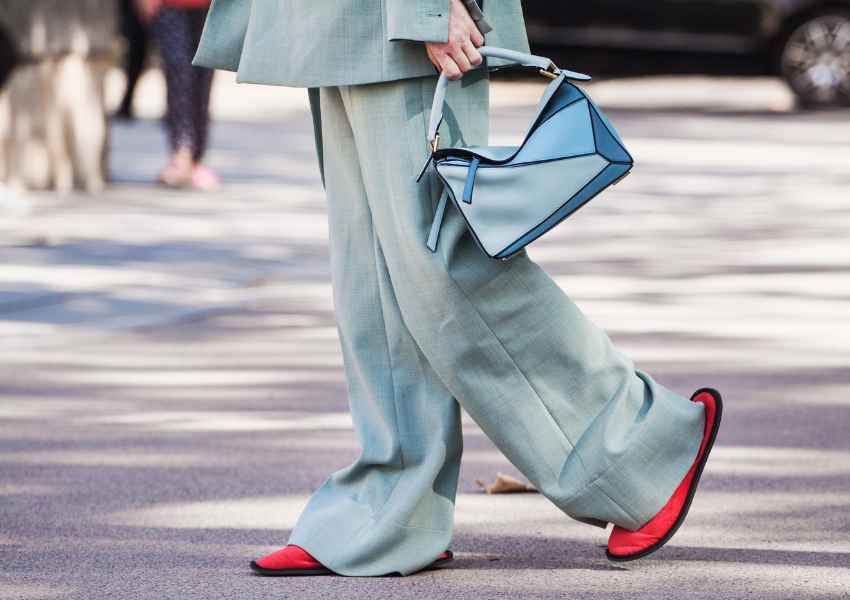
Q1: What is sustainable fashion, and why has it become a prominent movement in recent years?
A1: Sustainable fashion refers to clothing designed and produced in an environmentally and socially responsible manner. This movement has gained prominence due to increasing awareness of the negative impact of the traditional fashion industry on the environment, including issues such as pollution, excessive water usage, and unethical labor practices. Consumers are now seeking alternatives that prioritize eco-friendly materials, ethical production processes, and a reduced carbon footprint.
Q2: How can I make more sustainable fashion choices as a consumer?
A2: To make more sustainable fashion choices, consider shopping for timeless pieces that have a longer lifespan and supporting brands that prioritize sustainability. Opt for second-hand or vintage clothing, as it promotes the reuse of existing garments. Understanding certifications and labels, such as Fair Trade or Global Organic Textile Standard (GOTS), can guide you in identifying ethically and environmentally friendly products. Additionally, engaging in do-it-yourself (DIY) projects and upcycling old clothing are creative ways to contribute to sustainability.
Q3: What role do influencers and celebrities play in promoting sustainable fashion?
A3: Influencers and celebrities play a significant role in promoting sustainable fashion by leveraging their influence to raise awareness. Many influential figures advocate for eco-friendly practices, share information about sustainable brands, and use their platforms to encourage conscious consumerism. Their endorsement of sustainable fashion not only increases awareness but also sets trends and influences consumer behavior, contributing to the growth of the sustainable fashion movement.
Q4: How are big fashion brands responding to the demand for sustainability?
A4: Many big fashion brands are responding to the demand for sustainability by integrating eco-friendly practices into their operations. This includes using sustainable materials, adopting ethical manufacturing processes, and setting ambitious sustainability goals. Brands like H&M and Adidas, for example, have committed to using recycled materials and reducing their environmental impact. The response of big brands to sustainability trends indicates a broader shift in the industry towards more responsible and environmentally conscious practices.
Conclusion
Sustainable fashion movements are crucial in addressing the environmental and ethical issues posed by the traditional fashion industry. These movements not only help reduce the negative impact on the planet but also promote fair labor practices and animal welfare.
While significant progress has been made, the journey towards a fully sustainable fashion industry is ongoing. It requires the continuous effort of consumers, brands, and policymakers alike. The evolution of technology and innovative practices promise a more sustainable future for fashion.


